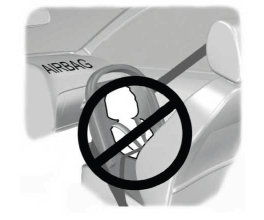Lincoln Aviator 2020-2025 Service Manual / Electrical / Electronic Feature Group / Collision Warning and Collision Avoidance System / Removal and Installation - Head Up Display (HUD) Module
Lincoln Aviator: Collision Warning and Collision Avoidance System / Removal and Installation - Head Up Display (HUD) Module
Removal
NOTE: Removal steps in this procedure may contain installation details.
-
Remove the instrument panel upper section.
Refer to: Instrument Panel Upper Section (501-12 Instrument Panel and Console, Removal and Installation).
-
Remove the bolts and position out the IPC.
.jpg) |
-
Disconnect the electrical connector and remove the IPC.
.jpg) |
-
Detach the instrument panel wiring harness retainers.
.jpg) |
-
Remove the bolts and the IPC support bracket.
.jpg) |
-
Remove the air duct.
-
Remove the air duct bolts.
-
Gently collapse the air duct.
-
Remove the air duct.
-
Remove the air duct bolts.
.jpg) |
-
Remove the bolts and position aside the HUD module.
Torque: 80 lb.in (9 Nm)
.jpg) |
-
Disconnect the electrical connector and remove the HUD module.
.jpg) |
Installation
-
To install, reverse the removal procedure.
-
Carry out the adjustments for the HUD module display.
Refer to: Head Up Display (HUD) Module Calibration (419-03C Collision Warning and Collision Avoidance System, General Procedures).
 General Procedures - Head Up Display (HUD) Module Calibration
General Procedures - Head Up Display (HUD) Module Calibration
Special Tool(s) /
General Equipment
501-418Calibration Target - NO STEP File Available
501-421Eye Box
Adjustment
NOTE:
If it is necessary to cancel any calibration adjustment use the return button to cancel the current adjustment...
Other information:
Lincoln Aviator 2020-2025 Service Manual: General Procedures - Air Conditioning (A/C) Clutch Air Gap Adjustment - Vehicles With: R134A Refrigerant/R1234YF Refrigerant
Activation NOTE: Compressor with a spring rubber clutch shown others similar. Check the A/C clutch air gap at 3 equally spaced places between the clutch plate and the A/C clutch pulley. Refer to Specifications in Group 412. Remove the A/C clutch...
Lincoln Aviator 2020-2025 Service Manual: Removal and Installation - Cruise Control Module (CCM)
Removal NOTE: Removal steps in this procedure may contain installation details. All vehicles NOTE: If installing a new CCM, it is necessary to upload the module configuration information to the scan tool prior to removing the module. This information must be downloaded into the new CCM after installation...
Categories
- Manuals Home
- Lincoln Aviator Owners Manual
- Lincoln Aviator Service Manual
- Keyless Entry
- Interior Lamps
- Garage Door Opener
- New on site
- Most important about car
Children and Airbags
WARNING: Airbags can kill or injure a child in a child restraint. Never place a rear-facing child restraint in front of an active airbag. If you must use a forward-facing child restraint in the front seat, move the seat upon which the child restraint is installed all the way back.

Copyright © 2025 www.liaviator2.com

